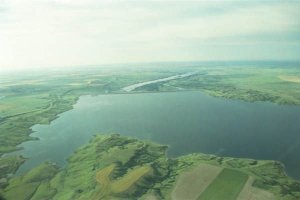

Edgar L Andreas
Senior Research Scientist
NorthWest Research Associates, Inc.
Lebanon, New Hampshire
It is with regret that we inform you that Ed Andreas passed away on 30 September 2015. We will miss him for his original and careful scientific thinking. He was a kind person and a classic gentlemen in all regards. If you need to contact someone at NWRA, please email Joan Oltman-Shay, President of NWRA at j.oltman.shay@nwra.com or call 425 556 9055 x0.
| Home | Ed's CV | Publications | Free Software |
Free Software
|
The software packages on this page are written in Fortran 90/95. In each case, the zip file contains Fortran programs and documentation that will let you compile an interactive version of the code. By interactive, I mean the algorithm asks you questions that appear on your monitor, you enter the answers with your keyboard, and the results print on your monitor.
Once you use this interactive version to evaluate how the program works, you can look at the main calling program to see how to embed the routines in Fortran programs of your own creation. If you find any bugs in any of these programs, please contact Ed immediately. |
 |
A Bulk Turbulent Flux Algorithm, Including Spray-Mediated Transfer (Kit_Version_4.0.zip)
This algorithm acknowledges two ways by which heat and moisture cross the air-sea interface: through the normal route right across the interface and the route mediated by sea spray. The algorithm therefore computes separate interfacial and spray fluxes for sensible heat, latent heat, and enthalpy and also computes the amount of total surface stress carried by the spray. Moreover, it computes the salt flux to the ocean from interfacial evaporation and from re-entrant spray droplets and the associated fresh water fluxes. This version is based on ten times as much data as previous versions. |
 |
A Bulk Flux Algorithm for Large Reservoirs and Lakes (Lake_Reservoir_Kit_1.1.zip)
This algorithm computes the turbulent surface fluxes (i.e., the surface stress and the sensible and latent heat fluxes) for large lakes and reservoirs. A key feature of this algorithm is that it runs even if you do no know the surface temperature. Because the surface temperature is not measured routinely at many reservoirs, this algorithm can estimate it from the given meteorological variables. |
 |
A Bulk Turbulent Flux Algorithm for Sea Ice, Based on the SHEBA Data Set (SHEBA_BFA_Kit_V2.0.zip)
The SHEBA data fell into only two aerodynamic seasons: winter, when the sea ice was compact and snow-covered and the snow was dry enough to blow and drift; and summer, when the snow was wet and sticky and eventually disappeared and the surface was finally covered by both ice and open water in melt ponds and leads. We also found that summer sea ice behaves, aerodynamically, like the marginal ice zone. This algorithm, therefore, provides estimates of the surface stress and the sensible and latent heat fluxes over winter sea ice, over summer sea ice, and over marginal ice zones in any season. Using an analysis of data from Ice Station Weddell, this new version of the code also allows you to specify a physical roughness of the sea ice (xi) if you have an estimate of that quantity. This version of the algorithm, therefore, has three options for representing the aerodynamic roughness. |
 |
An Algorithm for Fast Microphysical Calculations That Predict the Evolution of Saline Droplets (Fast_Microphys_V1.1.zip)
When properly scaled, the temperature and radius of evolving saline (or sea spray) droplets follow relations that are approximately exponential. This algorithm makes fast, microphysically based computations of the quantities that characterize temperature evolution (i.e., the equilibrium temperature and the e-folding time to reach that temperature) and radius evolution (i.e., the equilibrium radius and the e-folding time to reach that radius). It also computes the terminal fall velocity of the droplet. |